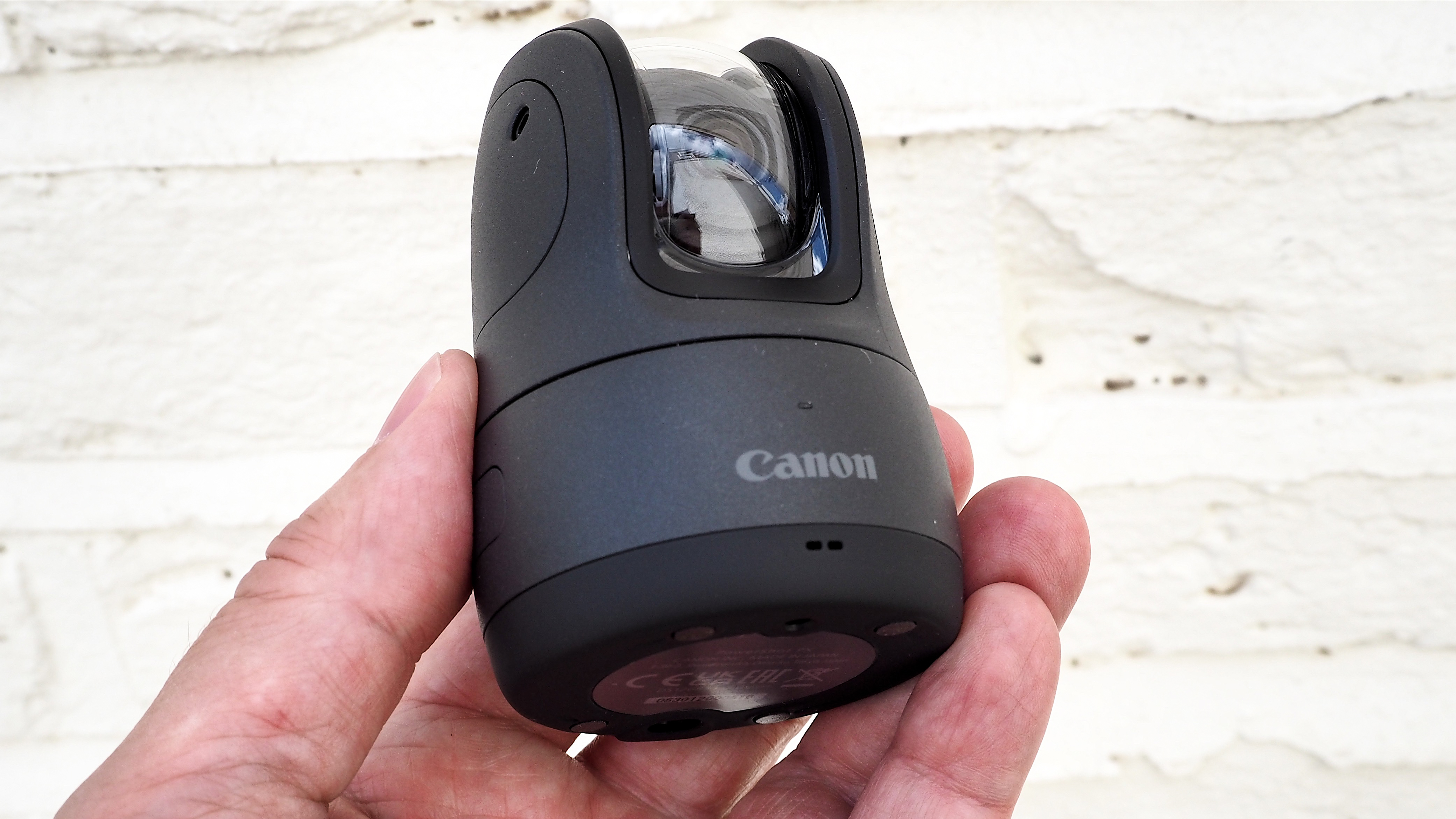
Originally released in time for Christmas 2021, the Canon PowerShot PX was, at that time, the company’s first ‘smart’ camera intended to revolutionize the way people – specifically families – take photographs. Sold as the Powershot Pick in North America and Australasia, the PX is an AI-powered surveillance device of sorts, the intention here was that the camera automatically takes photographs and videos without anyone needing to press a shutter release button.
With a pepperpot-style webcam look, the PowerShot PX was designed to be as unobtrusive as possible when stuck on a shelf or mantelpiece. The idea is that we’re free to socialize while it takes candid, un-posed snaps. Opinion was split in our household from the off, with some finding the look of the device ‘cute’ but others decrying it as ugly.
Looks can be deceiving, however. The real test is how it works when unboxed, charged, and powered up, paired with our smartphone, and ready to snap pictures or record video. Read on to find out how it does…
Canon PowerShot PX: Specifications
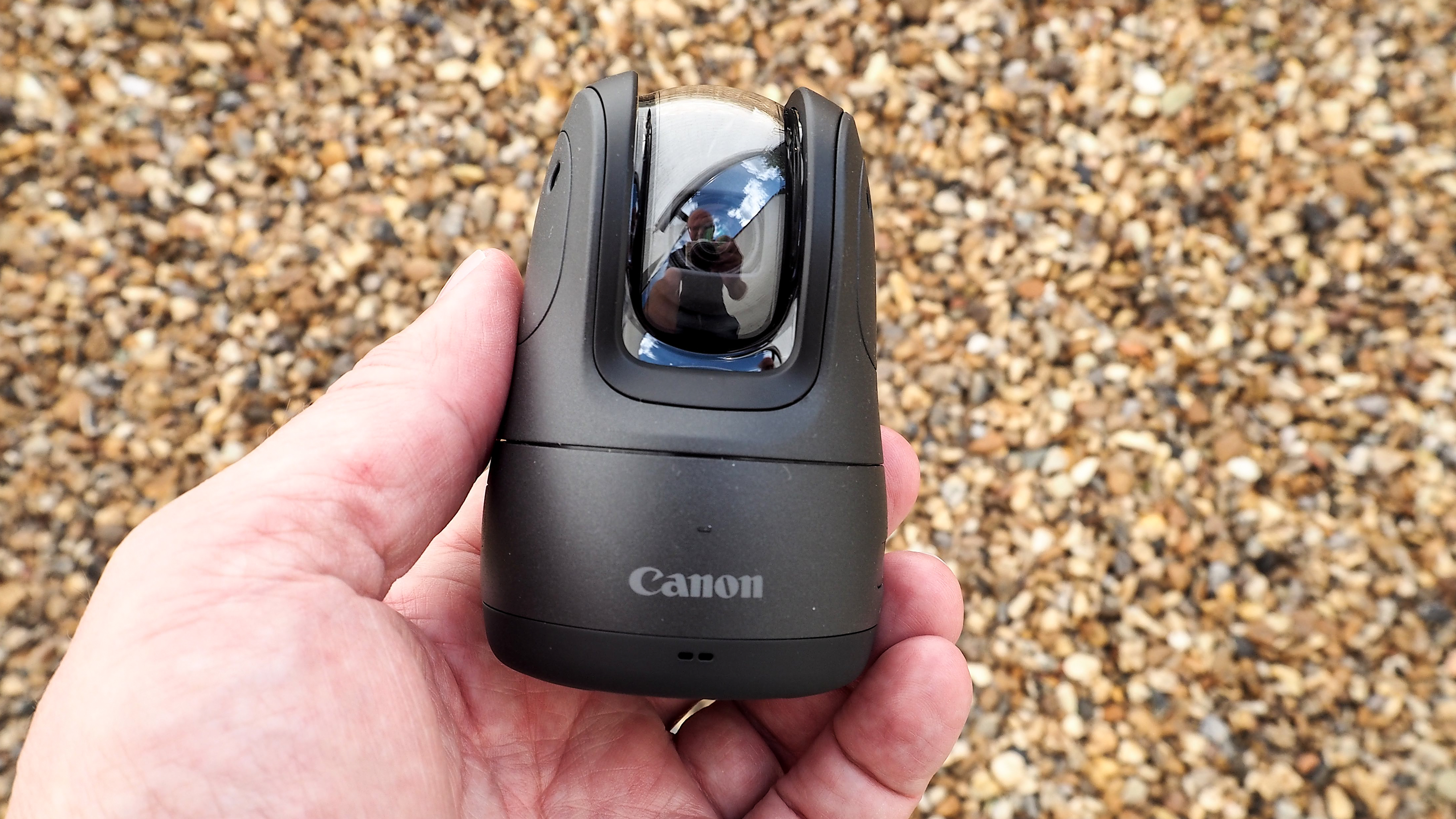
Sensor: 11.7 effective megapixels, 1/2.3-inch CMOS
Video: Full HD up to 59.94fps
Lens: 19-57mm
Pan and tilt: 340°, 110°
Viewfinder: No
Battery life: Up to 5 hours (low shooting frequency)
Dimensions: 56.4x81.9mm
Weight: 170g including microSD card
Key features
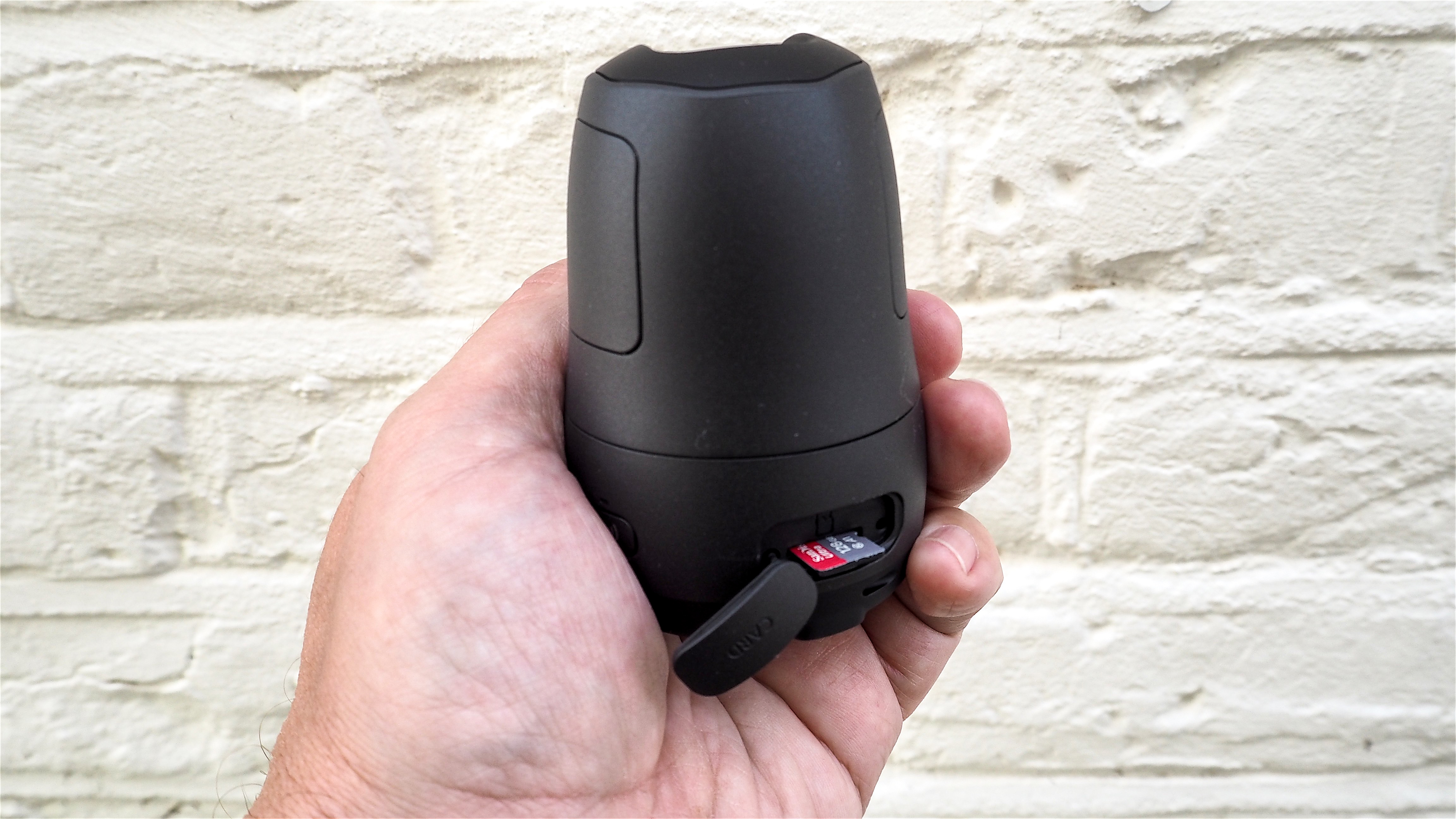
With salt and pepper pot-like white and black versions of the Canon PowerShot PX available, we can choose which one blends the best with our décor and lifestyle. The pepper pot description is apt, as the black version we had for review resembles the average size of said condiment holder almost exactly. It’s a compact 56.4x81.9mm. High tech though it may be, the diminutive device doesn’t initially resemble a heck of a lot of return for our outlay. But, on the plus side, at least that means that it’s unobtrusive enough to not draw the attention of houseguests and ruin the potential for any candid snapshots.
Core features of this desktop or shelf-top device include the ability to automatically capture 11.7 megapixel stills and Full HD video clips at up to 60fps. Enabling this, the PX or ‘Pixie’ features a pan and tilt zoom lens. While not quite a full 360° camera, it can nevertheless pan through a respectable 340° and tilt through 110°, enabling it to get the ceiling into shot, while its 3x zoom lens offers the equivalent of 19-57mm. This means it’s well equipped for wide-angle shots of the whole room, as well as up close and personal portraits at the telephoto end.
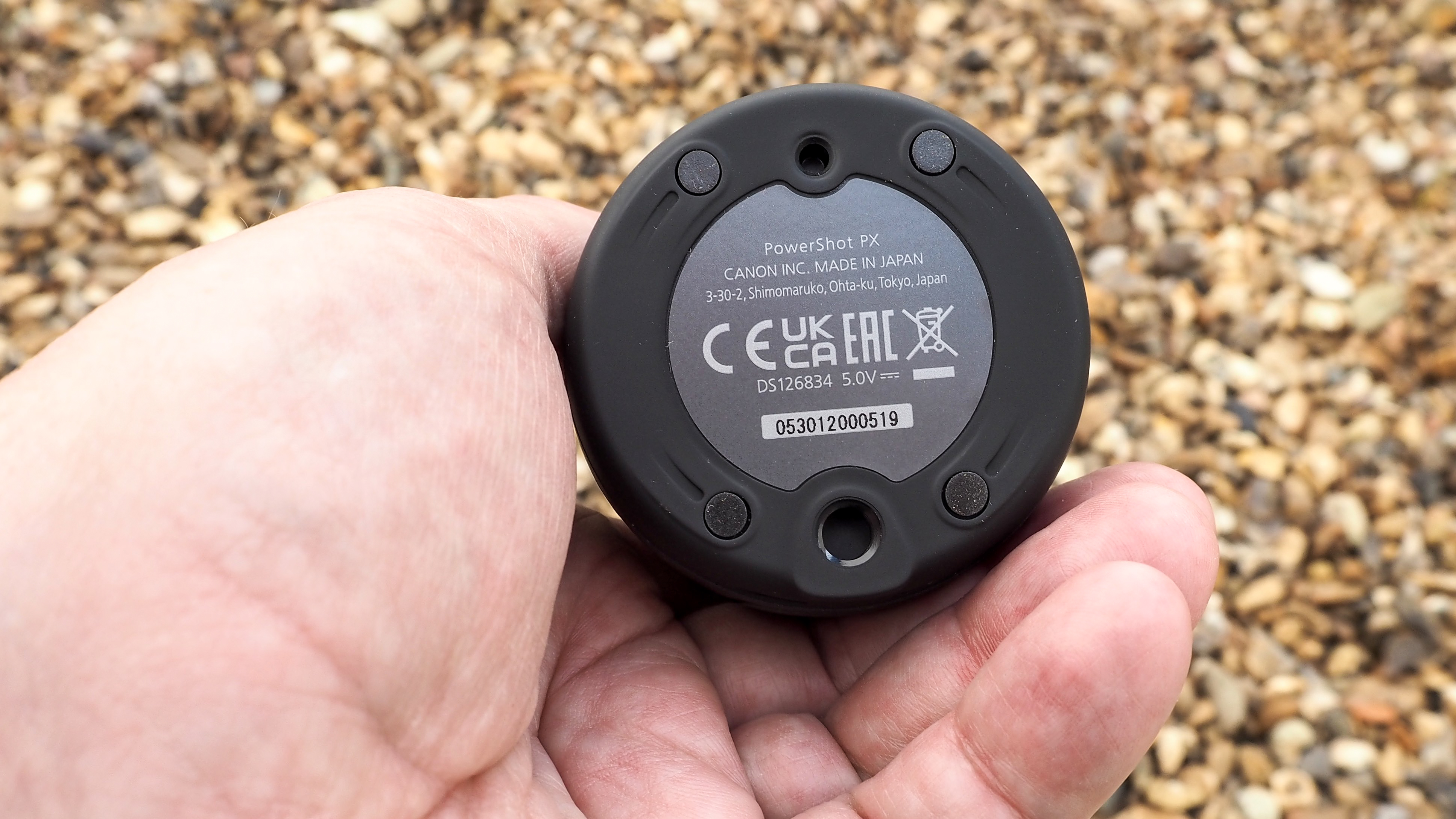
As one might expect, given that this is a tool for surreptitious fly-on-the-wall shots, face recognition technology is built in. We also get Wi-Fi and Bluetooth for communicating with our smartphones and tablets. Manual control and image management is via a downloadable Canon Connect app for Mini PTZ Cam, although it can also be voice-activated, which is ideal for group shots or self-portraits.
Given that the sensor in use is a modest 1/2.3-inch CMOS chip, here coupled with an earlier generation DIGIC 7 processor, we’re obviously expecting results to be snapshot like, rather than comparable with a DSLR or mirrorless camera with a larger APS-C or full-frame sensor; but then those more ‘professional’ cameras are not about operating autonomously.
Closest focusing distance is 20cm at the PowerShot PX lens’ wide-angle setting or 30cm at the telephoto end, with still images saved as JPEGs and video in MP4 format. A microSD card slot is provided on the unit itself, with, unusually, a 16GB variety arriving already bundled with our review unit as part of the Essential Kit.
While this device will not appeal to everyone – surely part of the joy of photography is being able to choose our own subjects and exert control over our shot composition and framing – if you’re the one who gets lumbered with taking the pictures at family gatherings, it might just free you up pop open the Prosecco and hoover up the bowl of Twiglets instead. It can also be used as a wireless webcam for video conferencing and streaming, albeit only currently with Windows 10 operating system PCs.
Canon PowerShot PX: Rivals
Due to the fact that it features its own flip out stand, thereby allowing it to be propped up for selfies and pieces to camera, do also check out the more recently released Canon PowerShot V10 if the Canon PowerShot PX appeals. The V10 is intended for content creators and vloggers and it’s not quite as pocket friendly and portable as the PX, yet feels more creatively flexible as well as feeling like better value overall.
Handling

As tends to be the case these days, charging and recharging the battery is via USB rather than standalone mains charger. The lithium ion battery is in this case built into the unit. Use is claimed to last for between two and five hours depending on whether there’s a high or low frequency of shooting. If we’re having a party, conceivably the Canon PowerShot PX could be left operational all night.
Before anything at all can happen though, we need to download the Canon Connect app for Mini PTZ Cam from the Google Play or Apple store, install it on our smartphone, and pair it with the device, which can be done over Bluetooth or Wi-Fi. Thankfully this process, not always failsafe, proved quick and easy this time around. Once done, our smartphone’s handset is transformed into a remote control panel for the device, complete with virtual shutter release for the capture of stills and video, as well as basic control provided over the device’s orientation and zoom, via an on-screen slider.
Alternatively, just like a virtual assistant, hands-free voice operation is, theoretically, as simple as asking ‘Hello pixie, take a picture’, or ‘take a video’. After a few responsive digital bleeps and whines that recall R2-D2, face recognition is deployed and the lens pivots and locks onto its target. We get the sound effect of a shutter firing to reassure us that a picture has actually been taken. Remote operation means there are few operational buttons on the device itself, save for a on/off power button, a wireless communication button, and ports for connecting the USB lead or inserting the microSD card. As one might expect, there is no LCD screen, but surprisingly Canon has made room to provide a screw thread at the unit’s base for tripod mounting if so desired.
Performance
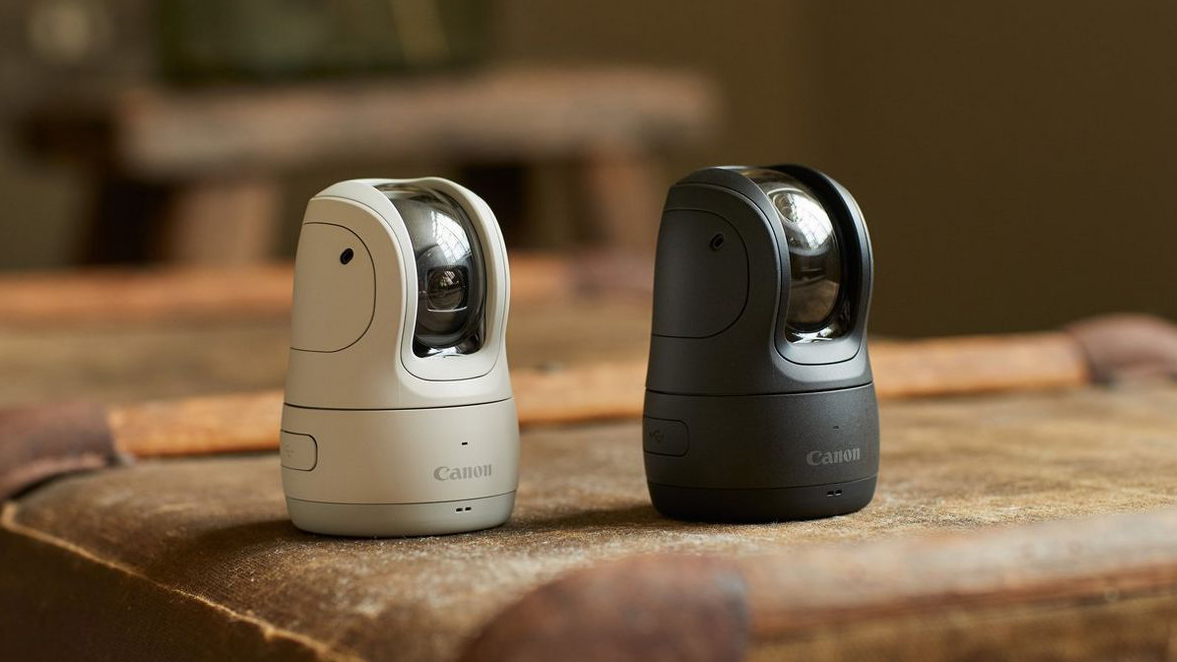
While they may provide a memory of a special occasion that may not otherwise have been recorded, JPEG images straight from the Canon PowerShot PX more closely resemble webcam or surveillance camera quality than a DSLR or mirrorless camera – which means that we probably won’t be putting them in the family album anytime soon.
Placing the camera at mantelpiece or shelf height results in a preponderance of double chins and slight fisheye-like effects, that wouldn’t be the case if we were looking through the viewfinder of a human, as opposed to AI operated, camera. We may chance upon a flattering shot we may wish to keep but this will probably be more by accident than design.
In darker rooms images appear progressively grainier and lacking in definition, which shows the limitations of the PowerShot PX’s modest 1/2.3-inch sized sensor. Videos from the device work better than stills, as image sharpness and definition is slightly less critical than it is for a still photograph, even if sound is a little boom-y, especially in smaller rooms or more confined spaces.
As you can probably tell, while face recognition works reliably, overall we weren’t especially thrilled or wowed by the device’s performance, especially as its original asking price suggests it as being more of a serious tool than it ultimately proves to be. But those families it enables to shoot naturalistic images that might not otherwise be achievable without such a covert device may well be more forgiving when it comes to critiquing its output. And ultimately it is being pitched more at families than photography enthusiasts.
Sample images


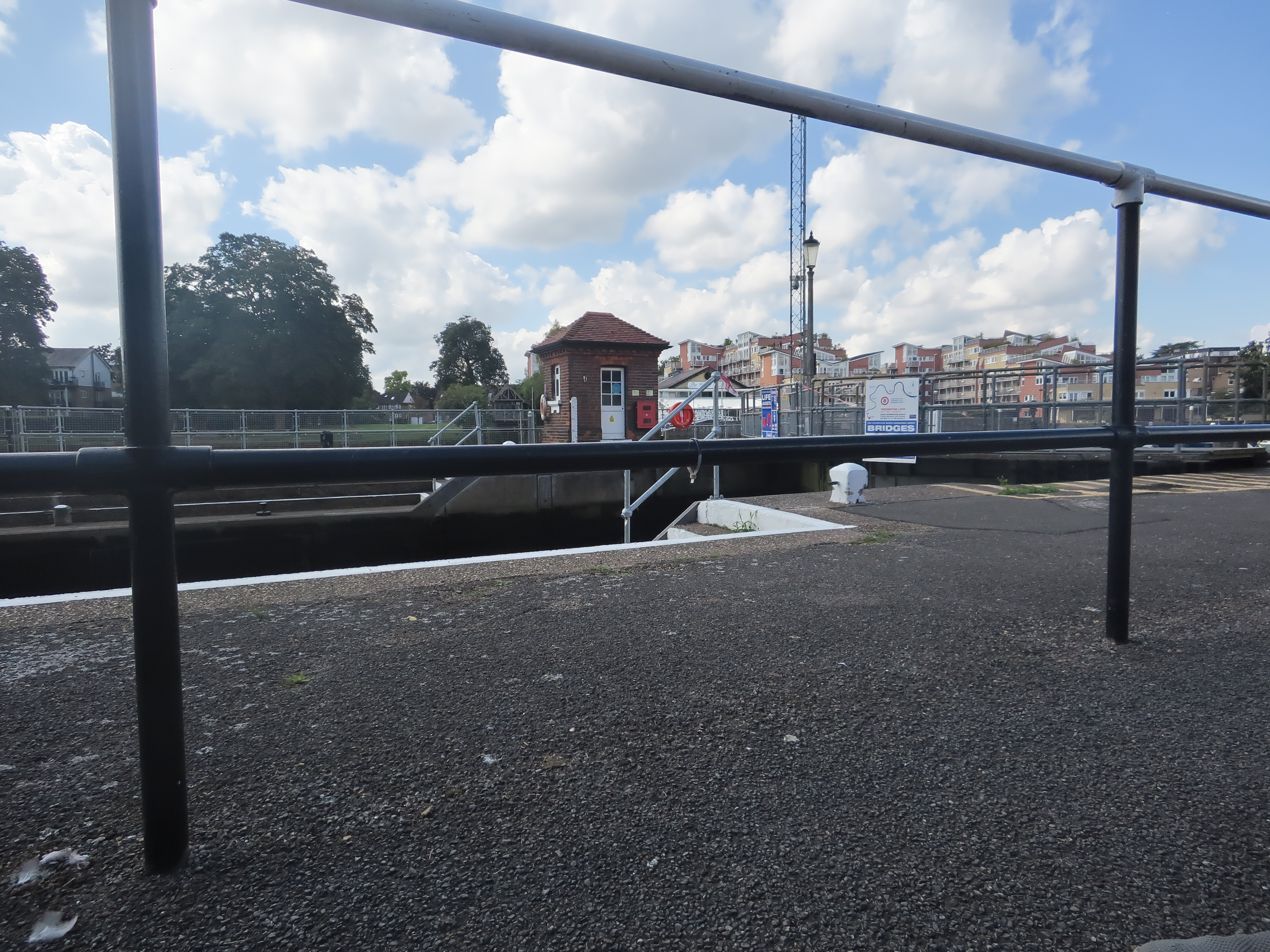

Canon PowerShot PX: Verdict

With people having got out of the habit of using dedicated digital cameras to capture family occasions and events, the Canon PowerShot PX is a valiant and innovative attempt to claw back some of that business, even if its manufacturer’s price and so-so performance means that this will still be a relatively niche and specialist device, rather than a mass market solution.
With image quality more closely resembling that of a basic point-and-shoot camera, webcam, or indoor security camera, depending on available light levels, any shots we’d want to keep come more by accident than design. But just perhaps that’s part of the fun of it. My teenage daughter has already asked if we can keep hold of the PowerShot PX until her next birthday party. That may well be just the review that Canon was looking for.
See also
Best body cameras
Best PTZ cameras
Best compact cameras







